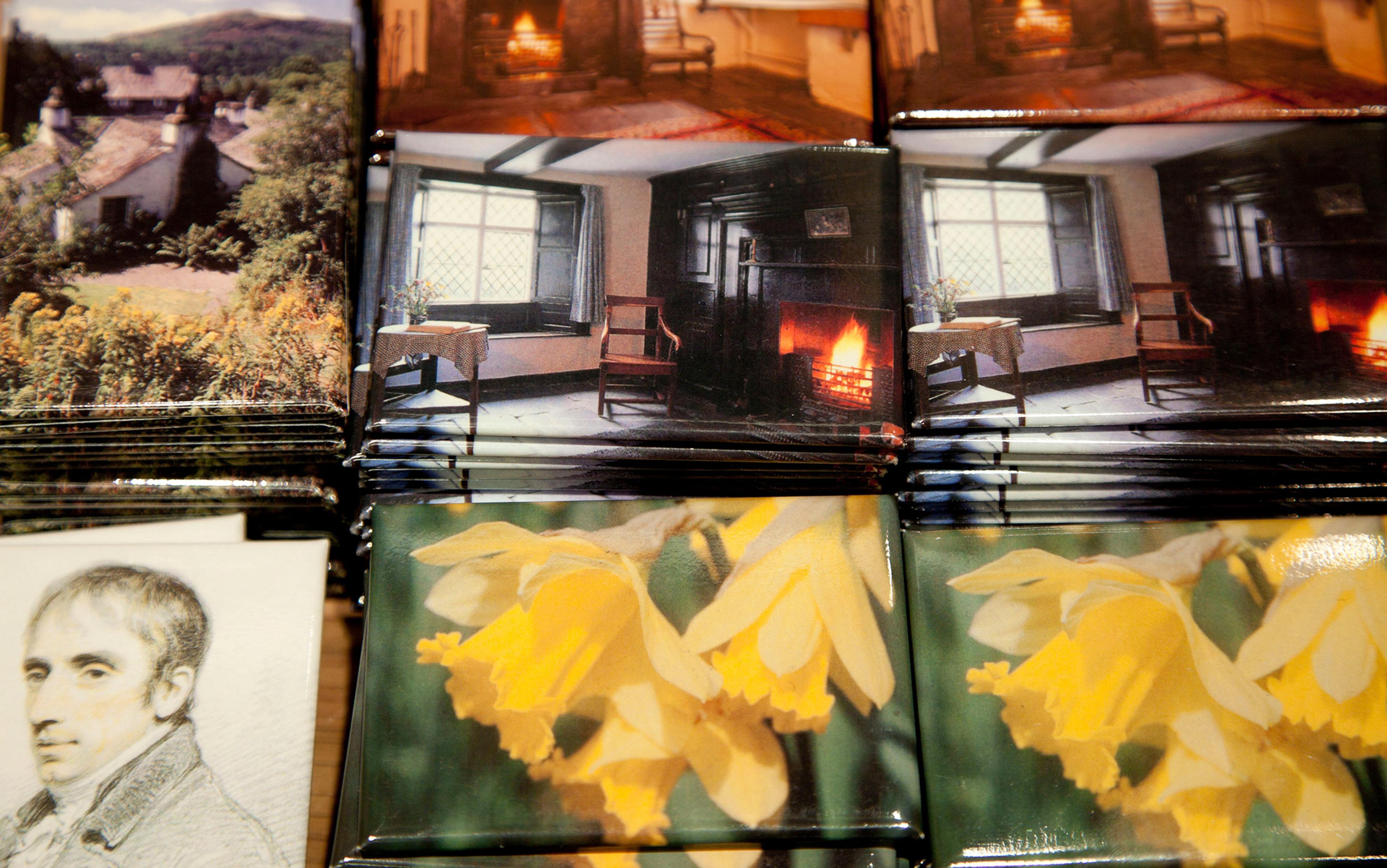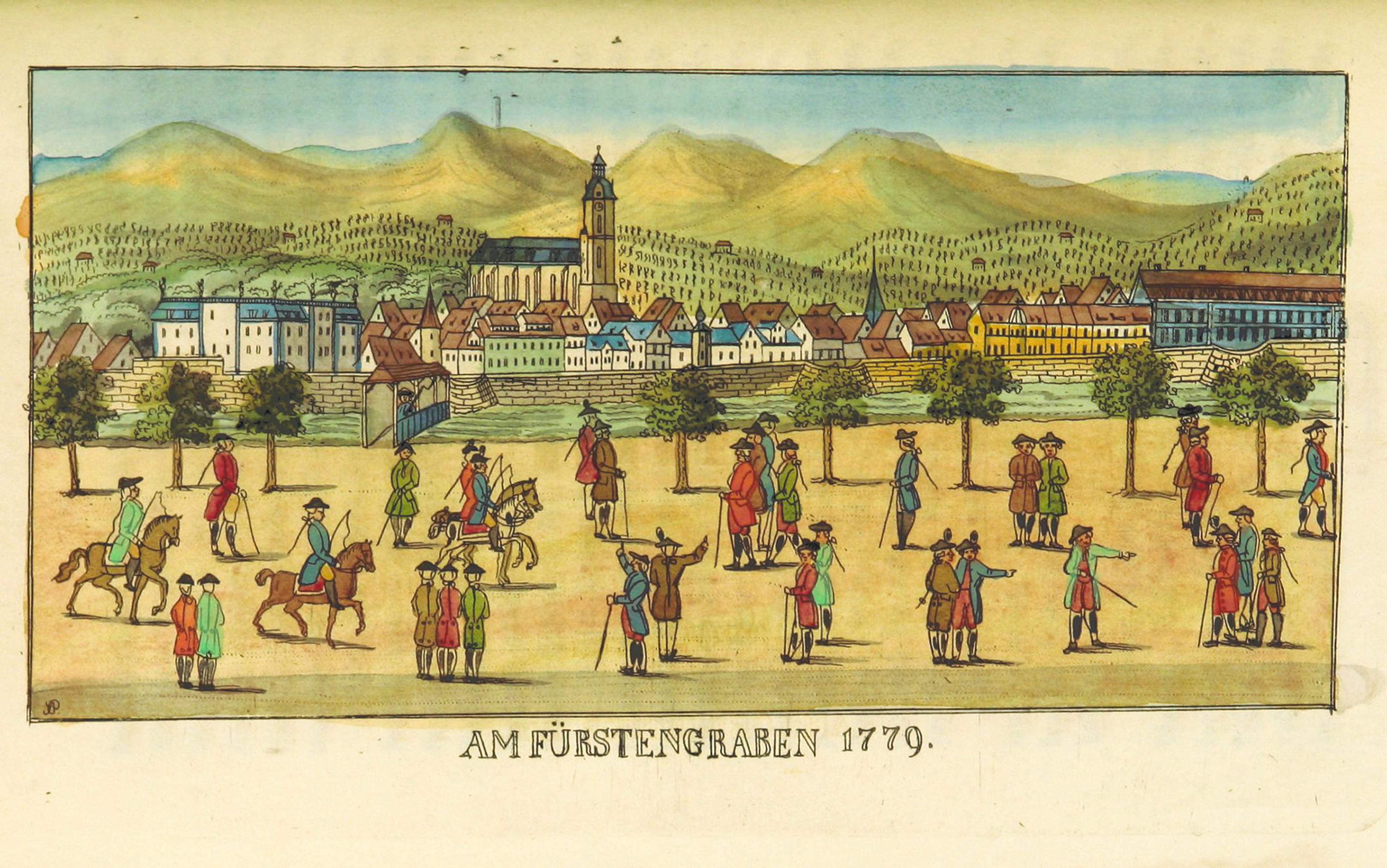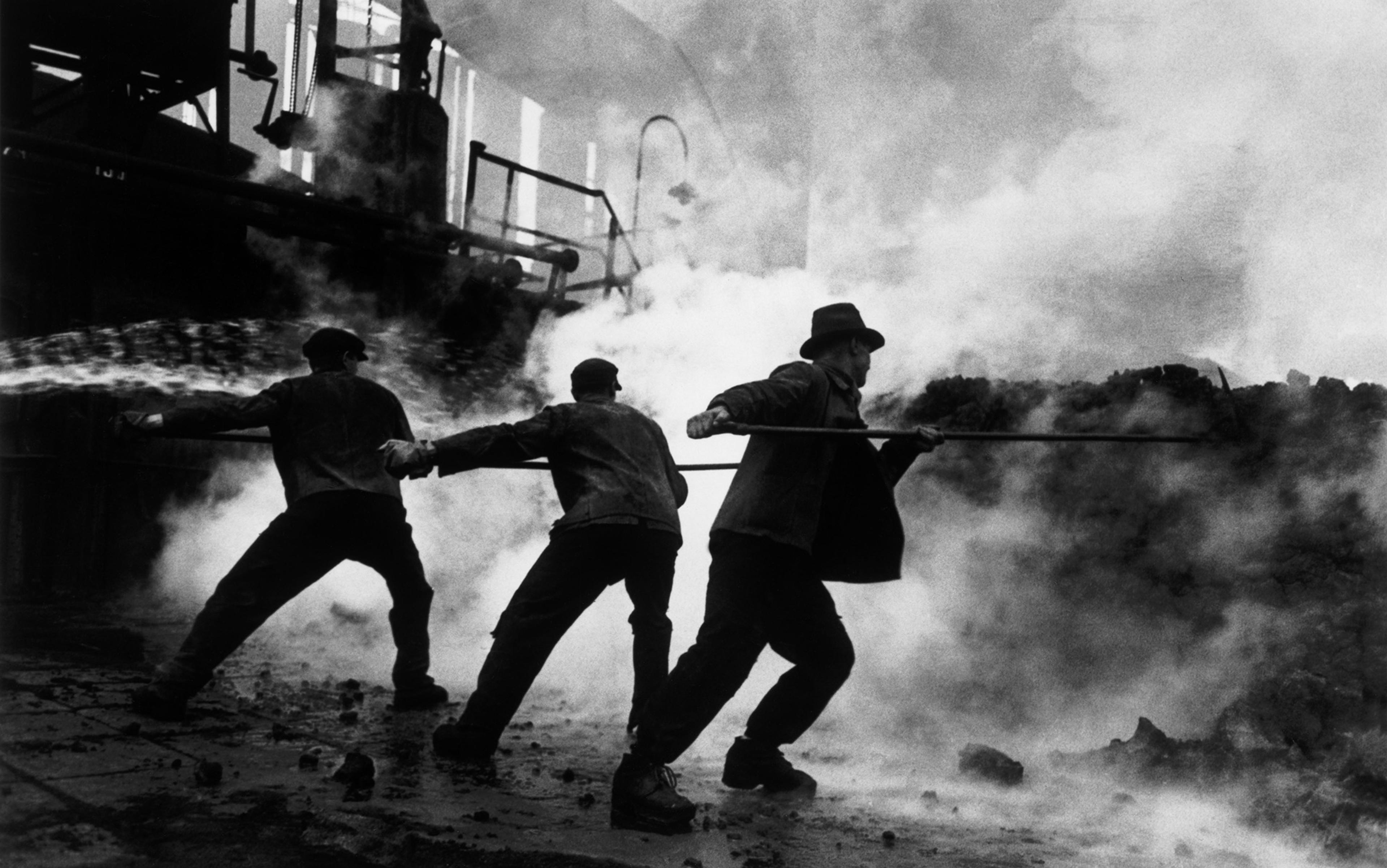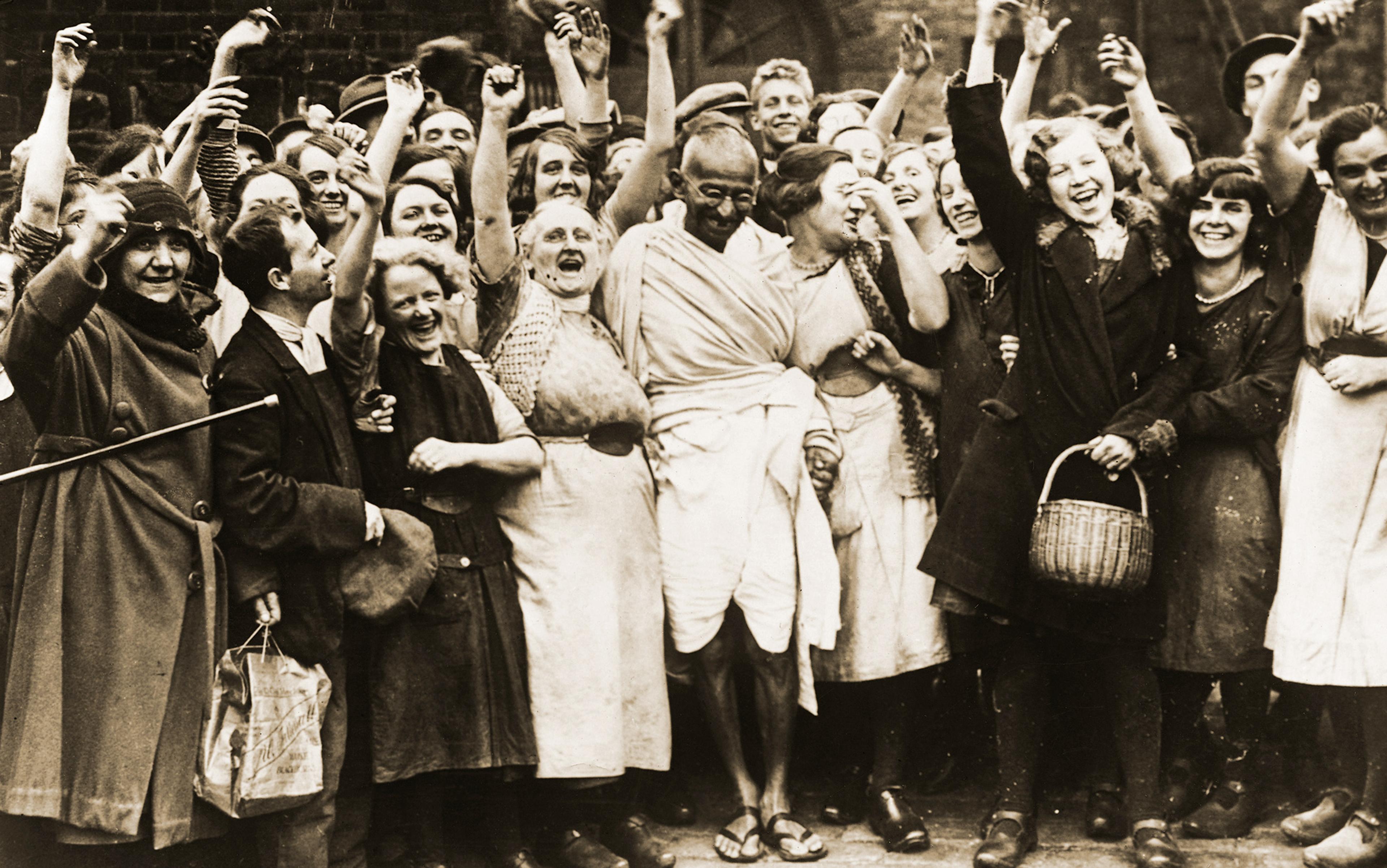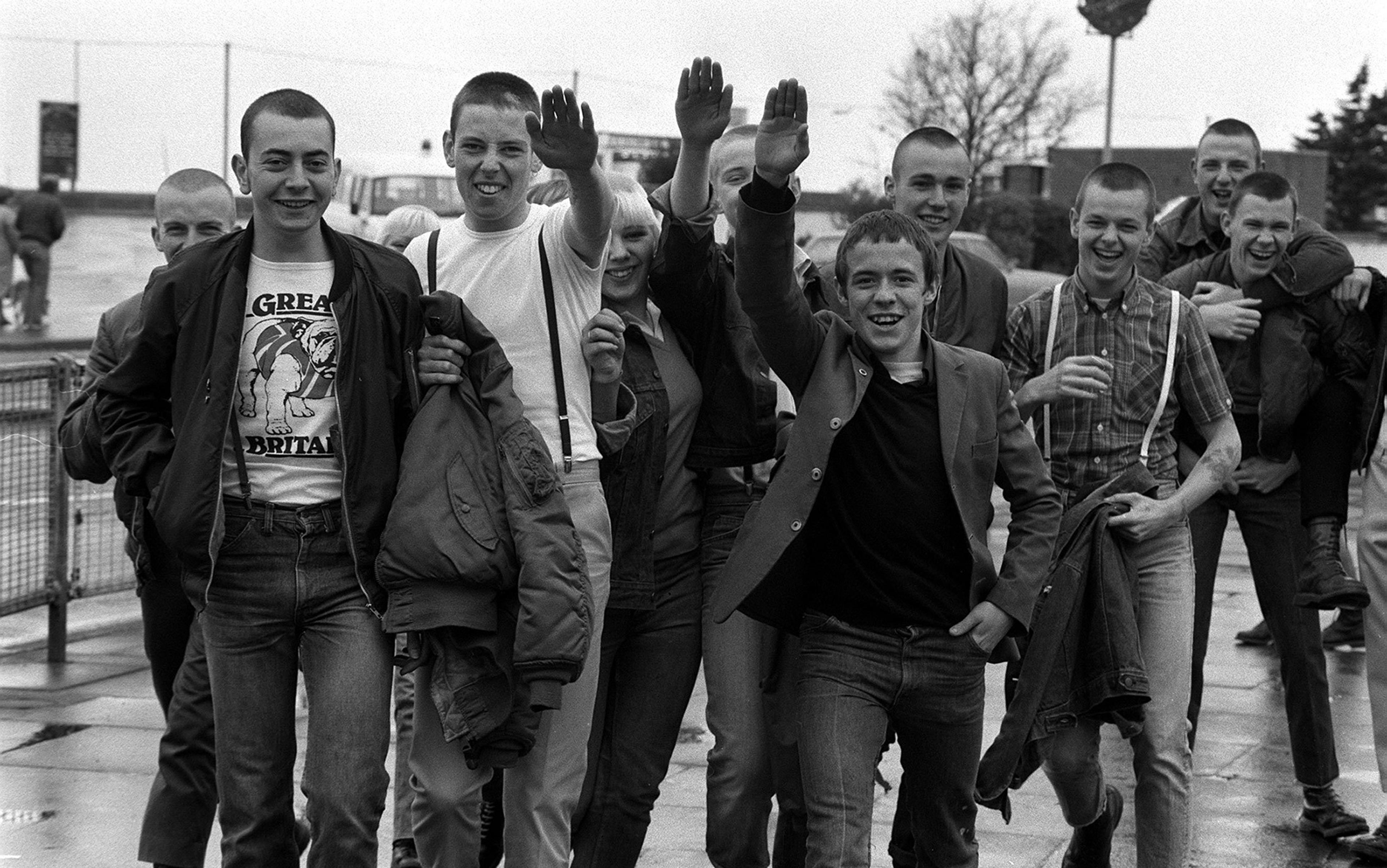Growing up in Britain means encountering a certain kind of early 19th-century culture as a given. Address book, china mug or wall calendar, the decoration is sure to be that overloaded harvest wagon, The Hay Wain (1821), painted by John Constable. Elsewhere, riffing comedians and headline writers crank out pun after pun on the first line of William Wordsworth’s lyric poem, ‘I Wandered Lonely as a Cloud’ (1804).
I vividly remember the teenaged sense of cultural claustrophobia that can result. These clichés were what we believed Romanticism to be, and they represented a past whose continuity we wanted to break. They belonged among the knitted teapot covers and potpourri sachets on the side tables of other generations’ lives. High school had taught us roughly when Romanticism was: from 1770, when Ludwig van Beethoven, G W F Hegel and Friedrich Hölderlin were born, to 1850, by which time Honoré de Balzac, Frédéric Chopin, Edgar Allan Poe and Mary Shelley had died. But the curriculum made zero connection between the artefacts it called ‘Romanticism’ and the realpolitik and real-life battles of Napoleonic imperialism, the Italian Risorgimento, the nation-building that culminated in 1848’s Year of Revolutions across Europe and Latin America, or the gradual abolition of slavery. Nor did we have any clue that Romanticism spoke directly to debates that raged – and still rage – around our own lives, whether about the violent resurgence of nationalism, or about identities and their associated rights.
So of course we had no sense of affinity with the radicalism and feelingful impatience of those youthful iconoclasts, the Romantic protagonists themselves. Their precocity passed us by: Felix Mendelssohn composing masterpieces as a teenager – the Octet Op 20 at age 16, A Midsummer Night’s Dream Overture Op 21 at 17 – or Mary Shelley writing her second book, Frankenstein, when she was 19. Admittedly, that great trio of second-generation poets – John Keats, Percy Bysshe Shelley and Gordon, Lord Byron, all dead by 36 – would probably have seemed old to us. (Mick Jagger may have read from Shelley’s Adonais at the start of the Rolling Stones’ 1969 Hyde Park gig: but for my generation, this too was antediluvian.)
And yet a belief – not always fully rationalised – in the value of the direct and unfettered underlay the movement, and could serve as a rallying call to a new generation. Romanticism itself eschewed conventional pieties, from marriage to the monarchy, in favour of immediate, intuitive thought; second-hand scholarship for risk-all radicalism. Freshness of thought was the ‘blithe Spirit’ with ‘unpremeditated art’, the ‘Wild Spirit, which art moving everywhere; / Destroyer and preserver’ of Percy Bysshe Shelley’s ‘To a Skylark’ and his ‘Ode to the West Wind’, written in June 1820 and October 1819 respectively.
How could such vibrancy have been reduced, within two centuries, to a genteel wallpaper for life in the global North?
One answer must be commodification, with its diminishing circle of repetition. It’s an irony that arguably the most radical movement in European thought should have been appropriated by the conservative forces of the market, but it’s also predictable. Among the market’s instincts is to monetise proven success, (literally) capitalising on already prepared appetites and cutting the costs of risk. And Romanticism has been, put simply, a global success: ‘let me count the ways,’ as that late Romantic, the poet Elizabeth Barrett Browning, puts it, in Sonnets from the Portuguese #43. (Itself another of those Romantic fragments to have attained the cultural reach of cliché.)
Romanticism was the engine of the French revolution, of the more-or-less pro-democratic revolutions of 1848, and of the successive formation of nation-states that continued for another century to ripple across Europe to the borders of Russia – and across every other continent where Romantic ideas about selfhood and self-determination forced the retraction of European imperialism: as far as Africa, Asia and the Indian subcontinent. Romanticism was the starting point of experimental science. Much of today’s world – its cities and its countrysides – are shaped by the agricultural and industrial revolutions that science informed.
The German philosophers who were the movement’s patron saints, among them Hegel and Immanuel Kant, shifted the terms of Western engagement with the world and its understanding of the nature of experience. Artists and writers developed genres of expressive realism – from the Bildungsroman to confessional verse – that are still in mainstream use today, far beyond Romanticism’s European cradle. Above all, in its regicidal turn from divinely ordained jurisdiction to authority earned by the exercise of reason, Romanticism placed the human individual at the centre of its universe. That human individual – not yet either a citizen or a subject but an actor defined by their thoughts and actions – contained the seeds of that other world actor without a hinterland, the 21st-century consumer.
The poem is not Gothic picturesque, but a metonym for the failed lives of the desperately poor
This global reach is exceptional. On the other hand, it outreaches what we might call brand recognition. While the movement itself embraced radical political, cultural and intellectual transformation, brand Romanticism has been reduced to products appropriated by a culture of nostalgia, reiteration and risk-less familiarity. Tablemats reproduce landscapes by Constable and his great contemporary, J M W Turner. Biopics retell the love lives and tragic deaths of Keats and Lord Byron. Mary Shelley’s Frankenstein and his creature schlock their way across popular culture, from graphic novel to comic movie turn. While – and because – these have become cultural clichés, the revolutionary force of the ideas underlying them has dropped away.
For example, the affinities between Frankenstein’s naked creature, that literal sans-culotte, and the peasantry whom the French Revolution was originally intended to rescue from abjection have been forgotten, along with their author’s early formation by her parents’ pro-Revolutionary philosophies. Yet how audible it is:
I felt cold also, and half frightened, as it were, instinctively, finding myself so desolate. Before I had quitted your apartment, on a sensation of cold, I had covered myself with some clothes, but these were insufficient to secure me from the dews of night. I was a poor, helpless, miserable wretch …
A generation earlier, the ‘roofless Hut; four naked walls / That stared upon each other’ in Wordsworth’s ‘The Ruined Cottage’ (1797), the poem that eventually became Book I of The Excursion (1814), is not Gothic picturesque, but a metonym for the failed lives of the desperately poor. Constable painted underpopulated landscapes not for aesthetic reasons but because the people who had lived there until recently had been cleared away by the nation’s landowners. The infamous emigrations that resulted from the era’s Scottish Highland Clearances and that genocide by starvation, the Irish Potato Famine, were echoed in smaller scale across Britain.
Still, there’s nothing to indicate to the Sunday afternoon visitor, browsing the gift shop at the exit of some English mansion, that its reproduction telescopes, or glossy postcards of the parkland folly, are traces of violent social, political and intellectual rupture: let alone of a period of historical shame. On the contrary, they seem comfortingly to suggest a robustly established culture – the one in which Jane Austen’s ever-popular novels, for example, are set.
These comedies of manners acknowledge, and so illustrate for us today, the influence Romantic thought was having on Austen’s contemporaries. Both her first published novel Sense and Sensibility (1811) and the posthumous Northanger Abbey (1817) – whose title alone signals gleeful Gothic pastiche – mock the effects of Romantic ideas about love and emotion, or ‘sensibility’, on young women in a marriage market that traded sexual charm for financial security. But in Austen’s world Romanticism is a mere fashion, which will be long outlasted by the economic self-protection and dynastic marriages that characterise what Noël Coward could still, a century later, call ‘The Stately Homes of England’. (As the economist Thomas Piketty has pointed out, Austen introduces her male characters by their incomes, so defining – and fixed – are they.)
Of course, Coward’s song, from his show Operette (1938), is waspish camp, as when he trills:
The Stately Homes of England,
How beautiful they stand,
To prove the upper classes
Have still the upper hand
we should not only note the sting in that last line, but hear behind it the 1827 original by the Romantic-era poet Felicia Hemans:
The stately Homes of England,
How beautiful they stand!
Amidst their tall ancestral trees,
O’er all the pleasant land.
When Hemans published ‘The Homes of England’, in the widely read and influential Blackwood’s Magazine, she gave it an epigraph from Sir Walter Scott’s Marmion: A Tale of Flodden Field (1808): ‘Where’s the coward that would not dare / To fight for such a land?’ (A grace-note: Scott’s verse-novel formed part of the Celticism that made him famous across Europe.)
Her florid language sounds of a piece with the decorative role to which the movement is relegated
The thrust of Hemans’s poem – there’s something special about ‘British values’ that is worth fighting for – is familiar in today’s post-Brexit archipelago, where an unpopular British prime minister can expect to seduce the electorate by reintroducing pre-metric measurements, the aptly named imperial system. In her essay ‘American Originality’ (2001), the US Nobel Laureate Louise Glück calls this:
the language of appeal that links Churchill to Henry V, a language that suggests the Englishman need only manifest the virtues of his tradition to prevail. These appeals were particularly powerful in times of war, the occasion on which the usually excluded lower classes were invited to participate in traditions founded on their exclusion.
Hemans’s poem had already embraced this doublethink. She brackets the idea that England is ‘free’ and ‘fair’ with its polarisation of wealth – ‘hut and hall’ is the tidy alliteration she comes up with – as if, far from a contradiction, this were the correct order of things:
The free, fair Homes of England!
Long, long, in hut and hall,
May hearts of native proof be rear’d
To guard each hallow’d wall!
In other words, like Austen (1775-1817), Hemans (1793-1835) was more Romantic-era than Romantic. That distinction is conveniently missable today, when her florid language sounds of a piece with the decorative role to which the movement is relegated. Hemans had been born late enough to benefit from the radical ideas about education and gender roles that Mary Wollstonecraft expounded in Thoughts on the Education of Daughters (1787) and A Vindication of the Rights of Woman (1792).
This complex, metamorphosing and unstable social world was very different from the fictional givens of Austen’s social round. Wider questions about society were being pressingly posed by the French Revolution, just 20 miles away across the English Channel; and by the work of political philosophers such as Wollstonecraft’s soon-to-be husband William Godwin, whose An Enquiry Concerning Political Justice, published in the year Hemans was born, advocated direct action against traditional structures of Church and state, including the repudiation of marriage. Such changeable social relations perhaps made it easier for a woman to have a career as a published poet than hitherto. That it did not produce an answering radicalism within Hemans’s work may mean nothing more than that she was already taking a radical step in living as a writer.
But there’s something else setting the teeth on edge here: something much more like false consciousness, even denial. Hemans continues:
The Cottage Homes of England!
By thousands on her plains,
They are smiling o’er the silvery brooks,
And round the hamlet-lanes.
Thro’ glowing orchards forth they peep,
Each from its nook of leaves,
And fearless there the lowly sleep
As the bird beneath the eaves.
Yet, as she would have known perfectly well, early 19th-century cottages were unlikely to ‘smile’ even through the mask of a transferred epithet. The Romantic era arrived in a perfect storm of hardship for the British poor. Wealth inequalities, already enshrined in the class system, were being underscored by the onset of imperial expansion, which may have brought the wealth of the world to Britain, but did not yet bring it to the majority of the population, whom it instead impoverished relatively further still: when the rich have more money to pay for things, the price even of staples rises. Underscored too by new manufacturing and business wealth. The era’s fortune-making industrial revolution was built on discoveries by the new Romantic science, from map-making (the Ordnance Survey was established in 1791) to James Watt’s 1776 adaptation of a steam engine suitable for use in industrialisation. But the labour that fuelled the industrial revolution was supplied by mass migration of the rural poor, in a process that became the model for world industrialisation.
Real life sullied and seemed to contradict Romanticism’s ideals
Peculiarly British, though, was the application of Romantic ideas to an already-accelerating para-legal process of Enclosure by estate landlords (aka, the aristocracy), which now cleared ordinary people off the common land on which their traditional subsistence farming had relied. Its twin motors were the agricultural revolution, and the fashion for picturesque, sublime and beautiful parkland. Once the gentry began to invest in the era’s new agricultural methods and machinery – such as seed-drills and horse-drawn hoes after the designs by Jethro Tull – they became eager to protect that investment. Between 1815 and 1846 a series of tariffs on imported wheat and all grains, the infamous Corn Laws, were enacted in the British Parliament: whose Members were drawn from this class. The resulting cost and scarcity of the staple food of the poor led to widespread destitution and starvation across Britain.
Meanwhile, since the 18th century, the same class had surrounded their ‘stately’ homes with newly landscaped parks, conspicuous consumers of agricultural land that formerly supported whole villages. Despite the social injustice this involved, Romanticism aided rather than resisted the process. In 1757, Edmund Burke, that Whig politician with a politically conservative legacy, had published his influential essay in aesthetics, A Philosophical Enquiry into the Origin of our Ideas of the Sublime and Beautiful. Adopting these categories, British Romanticism might have remained content to see them act upon the newly significant, sensitive individual, were it not for a pair of Herefordshire landowners.
In the mid-1790s, Sir Uvedale Price and Richard Payne Knight joined the artist-pioneer William Gilpin in advocating the picturesque, hitherto a principle of French gardening, as a quality that could be discovered and arranged within the landscape itself. Their legacy was to be not only the rise of the ultimately democratic tourist industry, but also numerous newly enclosed parks that imposed vistas of trees and lakes on the old ruled landscapes of strip farming.
It’s as if the process of drawing the teeth of Romanticism’s radical ideas was underway from the very outset. Real life sullied and seemed to contradict Romanticism’s ideals. After being sent down from Oxford in 1811, the 18-year-old Percy Bysshe Shelley stayed in mid-Wales with an uncle who had created just such a landscape on his property:
Rocks piled on each other to tremendous heights, rivers formed into cataracts by their projections, & valleys clothed with woods, present an appearance of enchantment—but why do they enchant, why is it more affecting than a plain, it cannot be innate, is it acquired?
The very next year saw the young radical in Ireland, pamphleteering for Irish autonomy and the franchise for Roman Catholics; in 1813, with the publication of Queen Mab, his Notes advocating pacifist vegetarianism appeared. Yet his lifelong reliance on money from his Sussex estate-owning family meant complicity in the era’s agricultural reforms, and in the aristocratic privileges surrounding the baronetcy to which he was heir. Nor was his reliance on such social inequity to enable his Romantic activity unique in what was also the era of Lord Byron’s literary celebrity. A little later still, the abolitionist Barrett Browning’s own family had profited from slavery.
And yet. As individuals, we do our best among the contradictions of situatedness. Barrett Browning used her literary fame to become a mouthpiece not only of abolitionism in the United States, but of the Italian republican struggle. For this, Florence buried her with full civic honours.
Five years after that formative encounter with the picturesque in the mountains of the Elenydd, we find Shelley composing ‘Hymn to Intellectual Beauty’ (1817), one of the first poems of his maturity, in which not only picturesque principles but the nature of experience itself are being worked out:
The awful shadow of some unseen Power
Floats though unseen among us; visiting
This various world with as inconstant wing
As summer winds that creep from flower to flower;
Like moonbeams that behind some piny mountain shower,
It visits with inconstant glance
Each human heart and countenance …
For Romanticism saw itself as not only a kind of High Table talking shop, but an actual agent of change. Witness Shelley’s fury at the older Wordsworth, fabulised in his 772-line Peter Bell the Third (1819), for selling out to the status quo:
To Peter’s view, all seemed one hue;
He was no Whig, he was no Tory;
No Deist and no Christian he, –
He got so subtle, that to be
Nothing, was all his glory.
…
He hired a house, bought plate, and made
A genteel drive up to his door,
With sifted gravel neatly laid, –
As if defying all who said,
Peter was ever poor.
Yet in settling their households in neighbourly community in the Lake District, Dorothy and William Wordsworth, Samuel Taylor Coleridge, Robert Southey and Thomas De Quincey created the precursor of those more radically reformed ideal communities – from Portmeirion on the Welsh coast, to Uri in Switzerland – with which the Shelleys and, to an extent, the Leigh Hunts and James Hoggs, experimented – and to which 20th-century hippies and today’s off-grid communities are heir. And it was Wordsworth’s collaborative friendship with Coleridge that had from 1795 helped sew the ideas of German Idealist philosophers including Hegel and F W J Schelling into the culture that Shelley’s generation absorbed. Shelley’s reaction against the British poet laureate who was his Romantic predecessor is itself a nice fit with Hegel’s idea of history as dialectical progress.
Romanticism records not cosy continuity but the very moment when that continuity was broken
And it is Wordsworth, the elder poet, whose ecological and political awareness remains most directly legible to us today: from ‘On Seeing Miss Helen Maria Williams Weep at a Tale of Distress’ (1787), the poem he published at 16 declaring his adherence to the new principle of ‘sensibility’, to his posthumous masterpiece The Prelude (1850) – that portrait of the artist as a village. Drawing the sting of psychological insight from Wordsworth’s ‘I wandered lonely’ or denying Constable’s insight into the linked conditions of climate and labour leaves us with little more than wildflowers in the English Lake District, or a cottage by an East Anglian ford. Prettiness: that most vacuous of principles.
An irony, then, to appropriate Romanticism to represent as a national specific, let alone as some version of a ‘timeless’ rural Britain. Romanticism records not the cosy continuity for which it is so often recruited: but the very moment when that continuity was broken. But it’s not just the muddle of individual human compromise that creates the vacuum in place of radical intention. The rise of the alt-Right reminds us how politically dangerous it is to base a nation’s view of itself on some version of a past that was white, feudal, Christian. At the very least, a disarmed Romanticism resembles that anaesthetic of political conservativism that the UK’s former prime minister John Major sought to apply to the Conservative Group for Europe in 1993, when he notoriously evoked:
long shadows on county grounds, warm beer, invincible green suburbs, dog lovers, and – as George Orwell said – old maids bicycling to Holy Communion through the morning mist.
Which, given Orwell’s own political vision, is a pretty bold reappropriation. But the de-radicalisation of Romanticism hasn’t been achieved only by political process. The market, too, has something of the conservative about it. Though it trumpets the new, it thrives on settled habits of consumption. Repeating the familiar suits it just fine. It may even prefer its consumers a little bored, as they sleepwalk back to the gift shop.
